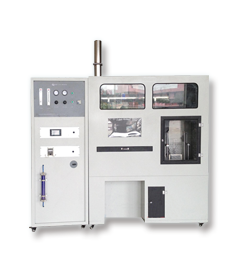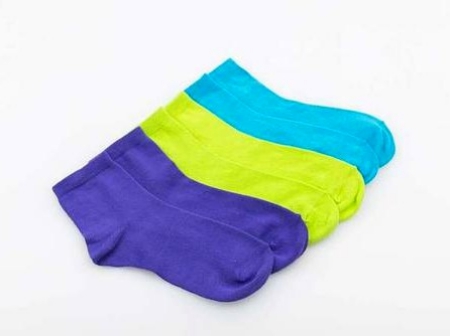
NewsInformation Center
Test conditions and test analysis of the Cone Calorimeter
2022/06/20
The main working principle of the Cone Calorimeter is the principle of oxygen depletion. When the sample piece burns under the thermal radiation of a conical electric heater, the flame consumes a certain concentration of oxygen in the air and releases a certain heat value of combustion. Through a large number of experimental tests and calculations, it is believed that the majority of the materials measured have a heat of combustion value close to the average value of 13.1MJ/kg, with a deviation of about 5%.
FTT's latest iCone2+ Cone Calorimeter
Cone calorimetry is based on this point, according to the amount of oxygen consumed by the material in the combustion process to calculate and measure the rate of heat release, mass loss rate and other parameters, to analyze and judge the combustion performance of the material.

Test conditions
1. Preparation of sample pieces
Conical calorimetry test sample pieces, should be intact, uniform material quality, the size of 100mm × 100mm square, the thickness of 3 ~ 20mm, commonly used thickness of 4, 10mm.
Sample parts can be pressed with a mold, or cut from the finished sheet. In short, no matter which way to make the sample pieces, must not appear uneven thickness, size bubble, pit lack of material, the surrounding convexity and concave phenomenon. Especially for the sample pieces pressed by mold, when the material is mixed or stirred, it should be repeated several times on the equipment to fully ensure that the material can be mixed evenly. This way the pressed sample pieces of material to ensure uniformity, stable results in the combustion test, and better repeatability of data.
Usually, the sample pieces to be tested should be selected of the same thickness for testing and comparison. It is best to prepare more than 2 pieces of each sample to be tested. Before testing, the sample pieces should be wrapped with aluminum foil on all 5 sides to prevent excessive dripping and inaccurate testing during combustion. A large flat surface exposed outside is used to mark the number, receive radiant heat and observe the test phenomenon.
2. Sample combustion box
Sample combustion box made of heat-resistant stainless steel material, is an important part of the test sample pieces, its shape and size are clearly defined and required, belong to the random accessories. The sample combustion box consists of lid, box body and liner layer, as shown in the figure.
Before the sample combustion test, the Cone Calorimeter sample combustion box should be cleaned inside and outside, there should not be any debris adhered to the lid, box body. If there are adhesions on the sample combustion box, when burning the test sample pieces, there will be irregular melting and falling off, thus affecting the authenticity of the collected data and quality loss, etc., resulting in inaccurate experimental results.
Sample combustion box liner layer is also very important, its main role is to play the insulation and adjust the height of the sample pieces placed. The height of the liner layer and the test sample after stacking should be the same as the lower surface of the top inside of the box lid, otherwise, the height of the liner layer should be adjusted.
3. Filter material
Conical calorimetry in combustion testing, the filter material is very important to the quality of sample gas collection and data accuracy, directly affecting the success or failure of the experimental results. Therefore, the quality selection and timely replacement of the filter material should be given sufficient attention, especially before the combustion test of the sample pieces, which must be fully prepared. Prevent the test process due to poor filtration, poor airflow, blockage of the pipeline phenomenon, and the resulting test failure.
4. Approved distance
The distance between the sample piece to be tested and the conical heater is set at 25 mm. when the sample piece is initially tested, the combustion box is placed on the combustion rack, and the distance between the bottom surface of the conical heater (when the protection plate is opened) and the exposed surface of the sample piece is approved and should be ensured at 25 mm. if the distance is not correct, it should be adjusted in time. There is a protruding adjusting screw at the vertical rod on the load cell, loosen the screw and move the slide sleeve up and down to adjust the distance.
5. Test calibration
Cone Calorimeter must be calibrated before the combustion test. Calibration items are mass calibration, oxygen analyzer calibration, radiation power calibration, laser smoke measurement calibration and calorimetric coefficient "C" value calibration. Only after the calibration of the above parameters, in order to make the computer on the sample combustion test, the data collected for effective arithmetic processing. Calibration parameters must meet the requirements to achieve the accuracy range of the instrument, in order to get a better calibration data, and smoothly carry out experimental testing.

6. Test analysis
Cone Calorimeter can collect a lot of data when testing the combustion process of polymers. However, not all of these data can be directly applied and need to be converted and selected in CSV format. Commonly used data are: Time(s), oxygen concentration OXY(%), ignition time Tign(s), data cut-off time EOT(s), flame extinction time FlmOut(s), heat release rate HRR(kW/m2), effective heat of combustion value EHC(MJ/kg), mass MASS(g), mass loss rate MLR(g/s), total heat release rate THR(MJ/m2), specific extinction area SEA(m2/kg), smoke generation rate SPR(m2/s), smoke release rate RSR(s-1) and other parameters.
When combustion testing, different materials of polymers get different data and different data curves. The same polymer base material and different filler will get different data, and the collected data and the change of data curve are with the change of filler material. Polymer base material is the same, filler is the same, but the fraction of filler (composition ratio) is different, the collected test data will be different, but the trend of their data curves have many similarities. Based on the data collected from the combustion test of multiple sample pieces, the graphs are made to summarize and compare the performance and laws, and to study and analyze them to draw test conclusions.
QINSUN as a leading cone calorimeter testing lab manufacturer, we produce cone calorimeter in line with astm standard, cone calorimeter test results accurate, price concessions, hot for sale around the world. Please send us a message if you want to get cone calorimeter price!
Previous: Mobile Nucleic Acid Sampling Kiosk Workflow
N e x t : "China and Bangladesh leather and leather products online fair" held in China



